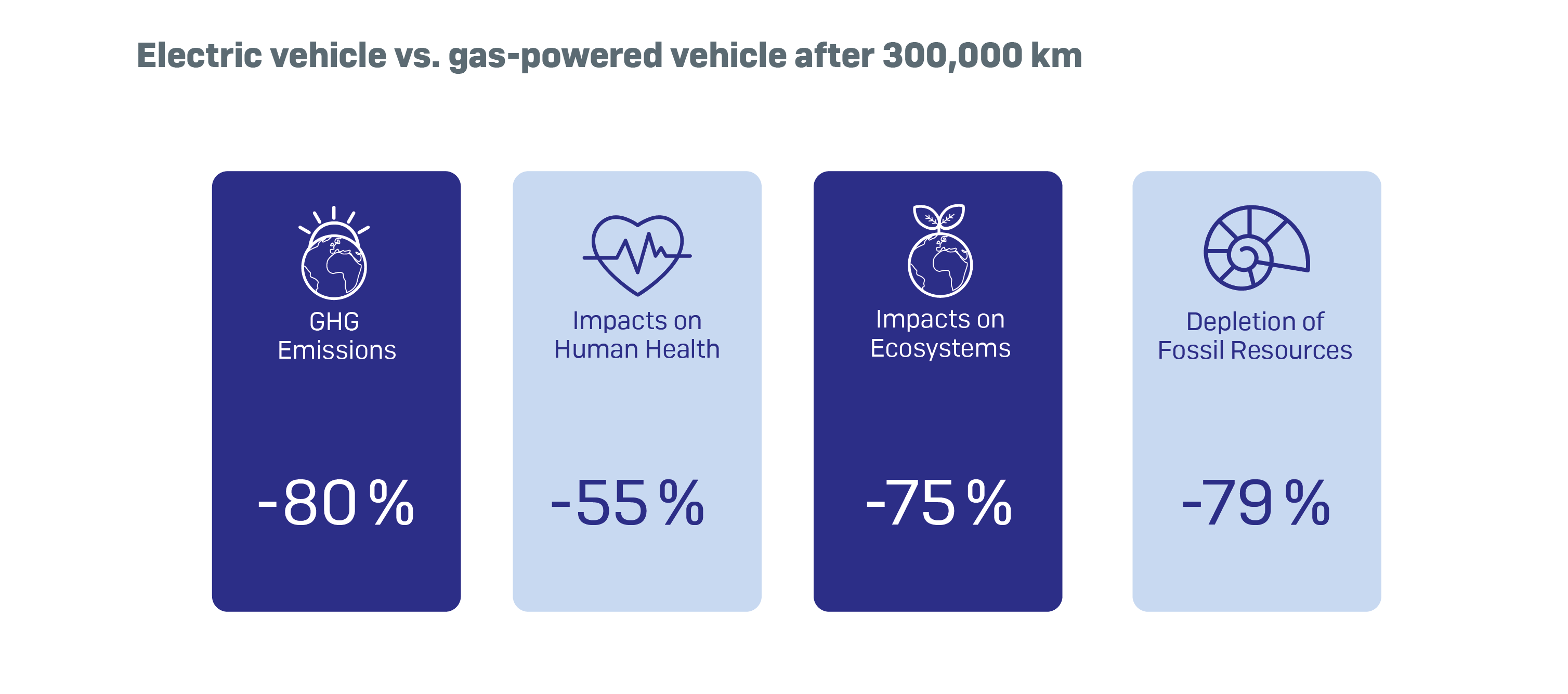Environmental Impact of Electric Cars Over Their Entire Life Cycle
3 April 2024
Are electric vehicles (EVs) powered by Québec-generated electricity more environmentally advantageous than gasoline-powered vehicles?
Over the past few years, various reports and studies have compared the life cycles of EVs and gasoline-powered vehicles in Québec and in Canada*. Potential impacts have been assessed in terms of the following indicators: human health, ecosystem quality, climate change and resource depletion.

The ins and outs of life cycle assessment
Life Cycle Assessment (LCA) is one of the most comprehensive and effective methods of measuring a product's environmental impact. These environmental impacts are analyzed over the entire life cycle - from extraction of natural resources, through manufacturing, distribution and use, to end-of-life and recycling.
How green is the electric car?
The studies are clear: the EV's environmental impacts are better than that of a gasoline-powered vehicle, not only in terms of GHG emissions, but also in terms of human health, ecosystem quality and the conservation of fossil fuels. These data take into account the production of vehicle parts – including the battery –, the energy required for such production, and the transportation of the vehicle to the user.
On a global scale, it's a fact: in terms of GHG emissions, EVs pollute up to 89% less than gasoline-powered cars, including emissions from mining, manufacturing and vehicle use.
In Québec, 99% of electricity production comes from renewable sources. This enviable position means that an EV needs to travel less than 30,000 km to amortize the GHG emissions generated by its manufacture. Given that the average vehicle is designed to last around 300,000 km, an EV in Québec is cleaner than a gasoline-powered vehicle for 90% of its useful life.

Note: CIRAIG data from 2016 for Quebec. The current situation has improved even more since then...
Year-on-year improvement in EV environmental performance
The environmental performance of EV batteries is constantly improving. For example, thanks to new processes, up to 95% of EV battery materials can now be recycled.
The battery composition is also evolving and now requires fewer and fewer critical metals. In fact, a new type of battery, called lithium iron phosphate (LFP), eliminates the need for cobalt and nickel altogether. Carmakers like Tesla are already using this battery in some of their models. Not only does an LFP battery cost 30% less to manufacture, it also is two to three times more durable. With an LFP battery, the average EV could cover more than a million kilometres over its lifetime!
At the same time, EV batteries purchased in North America are increasingly manufactured outside China, in places where electricity has a better carbon footprint, reducing by two to three times the GHGs emitted by battery production.
Environmental impacts are less significant than they used to be, and EVs are undeniably better than gasoline-powered vehicles in this respect. With new technologies constantly evolving in the field, the EV's environmental record will continue to improve over the years.
*See, among others, the CIRAIG analysis commissioned by Hydro-Québec on the use of EVs in Québec, and the Clean Energy Canada report on the situation across the country.
